In 1802 William Worsdworth wrote his sonnet : “It is a beauteous evening, calm and free…”
He had written few sonnets before. Whereas a poem like the sonnet “Composed upon Westminster Bridge…” written at the same period, is civic, this one is personal.
The purpose of this article is to say a few words about the sonnet but biographical information may come useful.
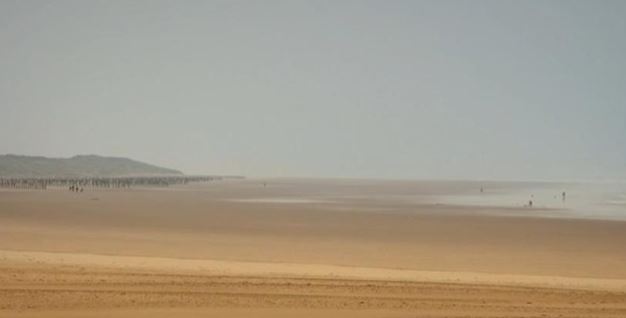
The poem was written after a walk along Calais beach, with a 10-year-old little girl.
Concerning William Wordsworth’s early years, the Wikipedia article (our first link) is a help, and of course reading Wordsworth’s poetry, in particular The Prelude (Books 9, 10 and 11 are about the poet’s stay in France). About the French period, most of what we know comes from a book published (in English) in 1922 by Émile Legouis, an English professor in the Paris Sorbonne (and later co-author with Louis Cazamian of a History of English Literature often reprinted, which generations of students have practised).
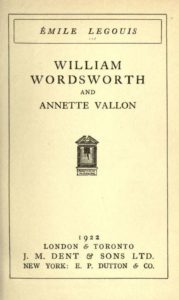
The book is in all bibliographies; it can easily be found, either as a reprint or through archive.org.
Attracted by the ideas of the French Revolution, William Wordsworth went to France in November 1791. He was a little over 21. He had been there already in July 1790 for the Fête de la Fédération; coming from England, “a free country”, he had been well-treated by the French and he appreciated the “brotherhood” (Fraternité in the French motto). He lived in Orléans and probably Blois in the Loire valley.

He fell in love (Legouis speaks of “blinding passion“) with Annette Vallon, the daughter of a Blois surgeon.
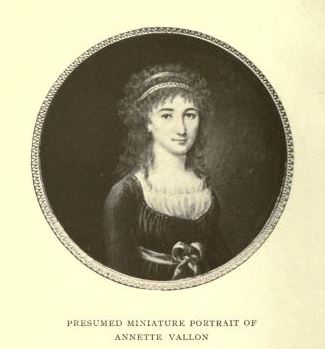
Born on June 22nd 1766, she was 25 when Wordsworth met her. Her political feelings were Royalist, but restrained at the beginning. Two cousins who were priests had accepted to swear faithfulness to the new revolutionary government (prêtres jureurs). Later, Annette Vallon became an ardent Royalist, close to the Chouan Movement, and she was rewarded for it after 1815.
William Wordsworth was favourable to moderate revolutionary ideas. He did not like the radical evolution that was taking place. As an English subject he was in danger and had to leave. Moreover, we are told he had not enough money to stay. The problem was that Annette Vallon was pregnant, but there was no other alternative. William Worsdworth did not escape his responsibility. Through letters, he and his sister Dorothy were informed of the situation. A girl was born on December 15th 1792 and named Anne Caroline. William Wordsworth recognized her and sent the money he could. He did not see her for 10 years.
In 1802, with the Amiens Peace, travel was again possible. Wordsworth was going to marry his childhood friend Mary Hutchinson, but before, he wanted to see Annette Vallon and Caroline. He met them in Calais in August and stayed there about a month. His sister Dorothy, acting as a chaperon, accompanied him. They had long walks on Calais beach. Dorothy later wrote about it in her diary.
Recently (2009) a novel by James Tipton, centered on Annette Vallon, re-tells her story.
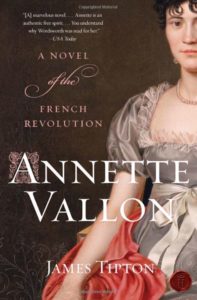
It is lighter reading; however it is very accurately documented. The author has a site on the Internet; his interview on most aspects of the novel and his approach to the subject is worth reading and extremely useful.
[To these biographical notes we may add perhaps that Caroline was married on February 28th, 1816 to Jean-Baptiste Baudouin, head of an office then sub-director of the Mont-de-Piété (State Pawnbroker). Wordsworth saw his daughter a last time in 1820. Caroline was the mother of two little girls. Legouis tells us that the poet had a lot of pleasure showing the elder the Ménagerie of the Jardin des Plantes. His grand-daughter was called Louise, Marie, Caroline, Dorothée and was about to be 4. William Wordsworth was also her god-father.
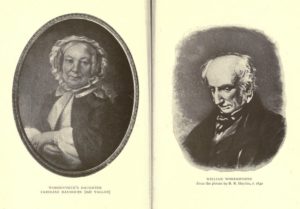 Caroline, the poet’s daughter, died on July 8th, 1862. Annette Vallon had died on January 10th, 1841, William Wordsworth later, on April 23rd, 1850. Émile Legouis shows a portrait of Caroline, old, and underlines her striking resemblance to William Wordsworth; he stresses that chin and cheekbone were rather prominent in father and daughter and also their “look of gaiety”.]
Caroline, the poet’s daughter, died on July 8th, 1862. Annette Vallon had died on January 10th, 1841, William Wordsworth later, on April 23rd, 1850. Émile Legouis shows a portrait of Caroline, old, and underlines her striking resemblance to William Wordsworth; he stresses that chin and cheekbone were rather prominent in father and daughter and also their “look of gaiety”.]
It is a beauteous evening, calm and free,
The holy time is quiet as a nun
Breathless with adoration; the broad sun
Is sinking down in its tranquility;
The gentleness of heaven broods o’er the sea:
Listen! the mighty Being is awake,
And doth with his eternal motion make
A sound like thunder – everlastingly.
Dear Child! dear Girl! that walkest with me here,
If thou appear untouched by solemn thought,
Thy nature is not therefore less divine:
Thou liest in Abraham’s bosom all the year,
And worship’st at the Temple’s inner shrine,
God being with thee when we know it not.
We are guided in our interpretation of the poem by Cleanth Brooks’s analysis in The Well Wrought Urn (1947).
A Wikipedia article on the poem makes a synthesis of various interpretations.
The poem tries to demonstrate (therefore, l. 4) that the child is not aware of her fusion with the divinity (l. 10); nor are we (we know it not, l. 14). The words of the sonnet – it is obvious – point towards a religious reading. The language uses religious terms and religious imagery, in the descriptive octave and, of course, in the metaphysical sestet: holy time (l. 2), nun (l; 2), adoration (l. 3), etc.
It is discursive and explicit:
Thy nature is not therefore less divine (l. 11).
The allusion to Abraham’s bosom (l. 12) is perhaps not immediately comprehensible today. It is a direct reference to the New Testament (Luke 16.22) : a sinless child belonged automatically to this intermediary realm between Heaven and the real world, a sort of eternal purgatory.
We can read the phraseology of the poem as the language of the eighteenth century and the early nineteenth century used when expressing “solemn thought” (l. 10). When Wordsworth uses an expression like “mighty Being” (l. 6), it is close to the deist, Revolutionary “Etre Suprême” (expression used in the preamble to the 1789 Déclaration des Droits de l’Homme).
Especially in the octave, the poet wants us to perceive nature with our senses. It is what a wordsworthian poetic experience is: a perception. The vision of the sunset (ll. 3-4) is a sensation repeatable by definition. So is the sound (l. 8) produced by the waves everlastingly (l. 8) breaking on the beach. Nature comes first in the poet’s vision of the universe, here and elsewhere.
Another typical wordsworthian point of view is the superiority of the child over the adult. Must we repeat here from the 1802 poem “My heart leaps up…” the well-known line :
The Child is the father of the Man
A thing of the past (in the 1802 poem, a rainbow) that delighted the poet when he was a boy, still delights him as an adult. And he hopes that he would continue to get delighted with the beauty of nature. A more ambitious interpretation is to say that it is through the child and thanks to the child that we learn. In our sonnet this dependence child/adult is clearly expressed:
Dear Child! dear Girl! that walkest with me here
The adult’s consciousness (me) exists only because the child makes it possible.
As an annex to this commentary, I offer to francophone readers my French translation of the sonnet (first published in July 2012):
C’est un beau soir, calme et libre ;
Moment sacré, paisible comme une religieuse,
Souffle coupé d’adoration ; le soleil ample
Se couche dans la quiétude ;
Le ciel très doux se recueille sur la mer :
Écoutez ! le Tout-puissant est éveillé,
Et fait, avec son mouvement sans fin,
Un bruit comme le tonnerre, éternellement.
Chère enfant ! Chère fillette ! Tu marches ici avec moi,
Tu sembles ne pas ressentir de pensée solennelle,
Mais ta nature n’en est pas moins divine :
Ta demeure est dans le sein d’Abraham, tous les jours de l’année,
Et le culte, tu le rends au sanctuaire le plus secret du Temple ;
Dieu est avec toi, pourtant nous l’ignorons.
[Pictures:
– a photograph of Calais beach from the Jost a mon blog (June 6, 2009)
in a post about Owen Sheers BBC 4 programme on Wordsworth sonnets, in particular Upon Westminter Bridge
– first page of Émile Legouis’s book William Wordsworth and Annette Vallon
– portrait of William Wordsworth in 1798 (he was aged 28) by William Shuter, Cornell Wordsworth Collection
– “presumed miniature portrait of Annette Vallon” in Émile Legouis’s book. Legouis adds : “The portrait of Annette Vallon published in this volume is not well enough authenticated for us to place much reliance on it.” Probably still in the Vallon family.
– cover of James Tipton’s book Annette Vallon: a novel of the French Revolution
– the portraits of Caroline (old) and William Wordsworth come from Legouis’s book; the portrait of the poet (on the right) is a detail of a portrait by Benjamin Robert Haydon, painted in 1842, when Wordsworth was 72, now in the National Portrait Gallery in London ;
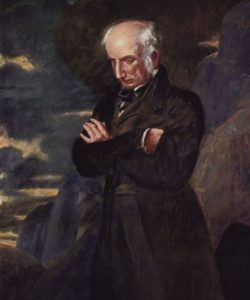
the portrait of Caroline, probably by her son-in-law, Théophile Vauchelet (then painted after 1851), was, in 1922, in the Versailles Museum.]

Fascinating stuff. Thank you.